Calamarata Pasta with Stewed Cuttlefish and Peas.
Stewed cuttlefish and peas is a delicious classic Italian seafood recipe that can be served as a main course or, as I have done, with pasta. In Italy, it’s eaten all year round, but is especially popular in the spring when fresh peas are available!

Calamarata con seppioline e piselli.
Stewed cuttlefish and peas is a popular and traditional recipe in Central and Southern Italy. In fact, a number of different regions consider it a typical regional dish. You can find this recipe ‘alla Romagnola’ (from Emilia-Romagna) ‘alla Napoletana’ (from Campania) and ‘alla Siciliana’ (from Sicily). I followed an 'alla Romana' recipe from Lazio. It’s also made in Le Marche and Abruzzo.

Unlike some other traditional dishes, this recipe is practically the same throughout the regions it is eaten in. Slight variations are the use of garlic instead of onion and the inclusion of basil rather than parsley, as well as the addition of peperoncino (red chili pepper). Those versions are more Southern Italian. Some people make a ‘white’ version, meaning without tomatoes. I made that too so you can see the difference. Taste wise it’s hard to choose. Both versions are delicious and I particularly like it with calamarata pasta.

Cuttlefish is not squid!
This calamarata pasta with stewed cuttlefish and peas can be made with large or small (baby) cuttlefish. When Italians cook this dish as a main course using baby cuttlefish, they often keep the cuttlefish whole! For pasta, you need to cut the cuttlefish into smaller pieces whatever their size. I used baby cuttlefish, called seppioline in Italian.

Although some people confuse them, cuttlefish are not squid! They are a separate species of the Cephalopoda family which includes squid and octopus. Most of the species in this family produce ink which they release into the water to help them escape from predators! However, it is actually mostly cuttlefish ink that is used in Mediterranean and Japanese cuisine, even if the label says squid ink!

I used baby cuttlefish for this calamarata pasta recipe but you can also use larger cuttlefish, calamari or moscardini (musky octopus). The cuttlefish can be fresh or frozen. Like squid and octopus, cuttlefish are actually more tender when frozen. So, using frozen is okay. Also fresh cuttlefish can be messy to clean because of the ink sacs. Frozen ones have normally had the ink sacs and innards removed.

The pasta.
As mentioned above, stewed cuttlefish and peas is eaten here in Italy as a main course or with pasta. Of course, I served it with pasta. However, you can eat this dish with bread, potatoes, rice or polenta!
The pasta I used is calamarata. I love this pasta. It’s originally from Naples, where they usually eat it with seafood. As you may imagine, the word ‘calamarata’ comes from calamari. This pasta resembles calamari rings. In fact, there is a fabulous traditional recipe from Naples with this pasta and calamari called La Calamarata . Check out the recipe for that by clicking the link below.
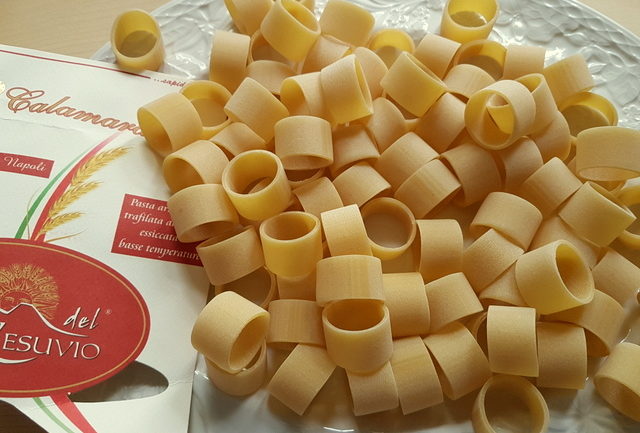
I bought calamarata pasta made by a company called Le Gemme del Vesuvio located in Naples. This pasta was really good and I would use it again. But, I’m not sure how widely available it is outside of Italy. However, many well-known pasta makers produce calamarata pasta. Among those I’d recommend are Pastificio dei Campi, Rummo, Di Martino, La Molisana, Afeltra and De Cecco. (There are others of course!)

If you can’t find calamarata pasta, you can make this dish with other large pasta tubes like mezze maniche, pennoni (large penne), paccheri etc.
Making this calamarata pasta with stewed cuttlefish and peas.
As with many Italian pasta recipes, this dish doesn’t have a ton of ingredients. Apart from the pasta and cuttlefish, you only need a white onion, white wine, parsley, vegetable broth, seasoning, peas (fresh or frozen) and tomatoes (fresh or canned).
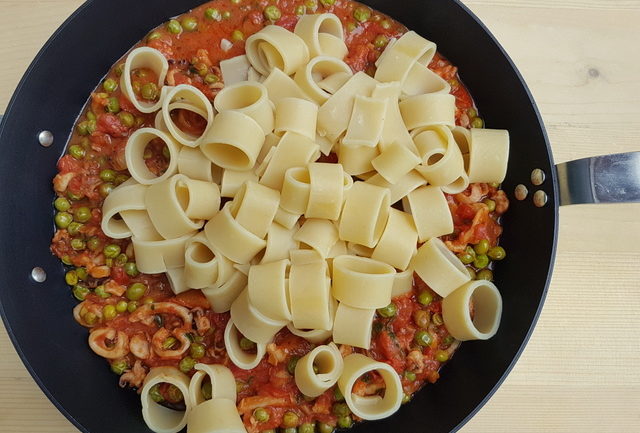
Like calamari and octopus, cuttlefish need to be cooked either very fast or slow. This is because these sea creatures have a lot of connective tissue. When cooked fast these tissues don’t have time to harden so the cuttlefish stays soft and tender. In fact, you can even eat them raw!
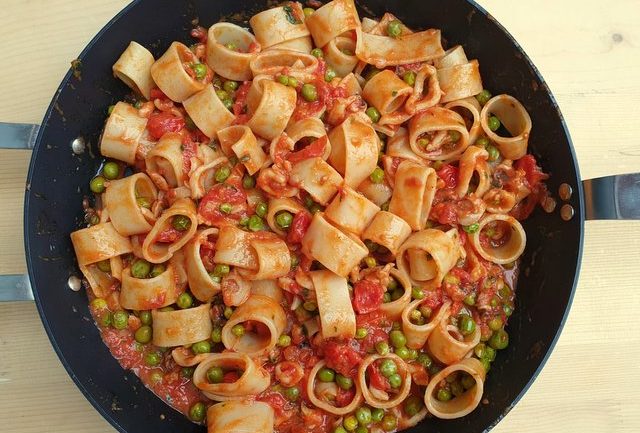
When slow cooked, the connective tissues break down and the cuttlefish becomes tender. Since this is a stewed cuttlefish recipe it requires about one hour of cooking in total. If not cooked enough, the cuttlefish will be tough. Just cook it longer to soften it further!
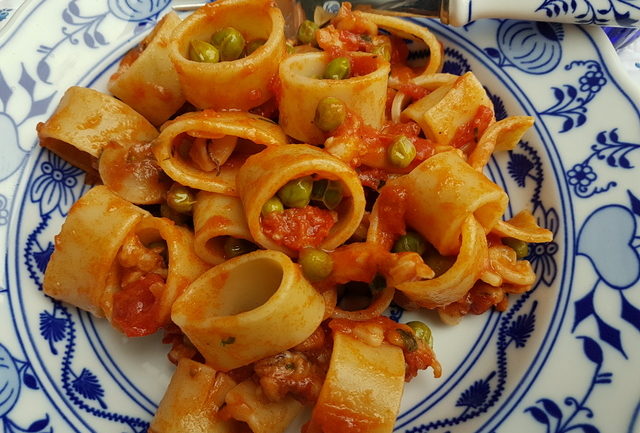
As I have mentioned you can make this stewed cuttlefish and peas recipe as a main course or with pasta. You can add tomatoes or, if you prefer, make it white (bianco). Whichever way you decide to prepare this dish, I’m sure you will love it!
If you do try this recipe, I’d love to hear what you think. Please write a comment here on the blog or post a comment on the Pasta Project Facebook page.
Your feedback means a lot to me!
Buon appetito!
Other calamarata recipes on The Pasta Project.
Save this recipe for later?
If you want to save this recipe for later, you can print it, bookmark this page or save it to Pinterest.
Pin for Later
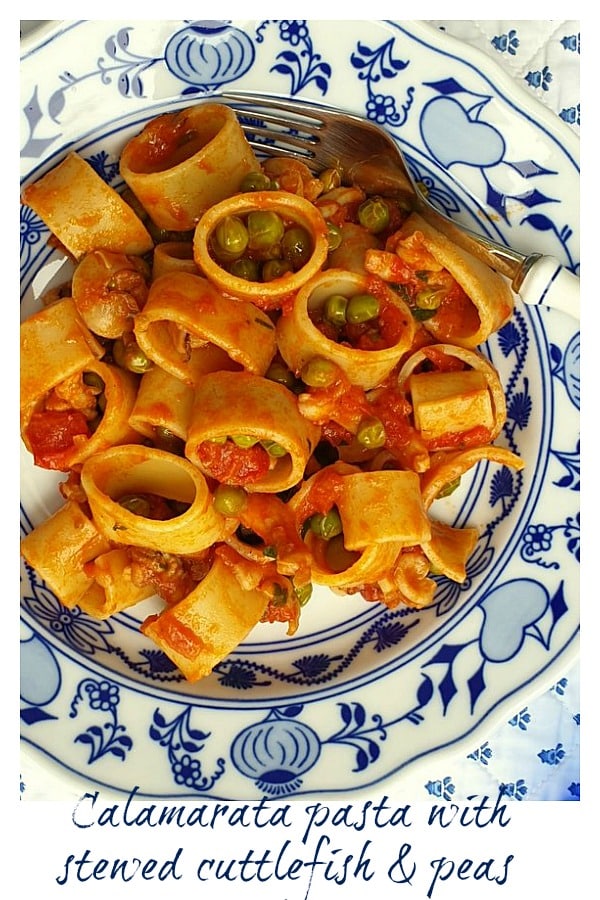
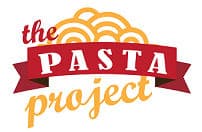



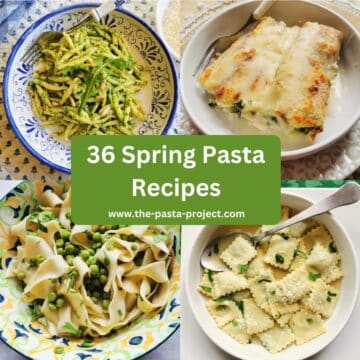
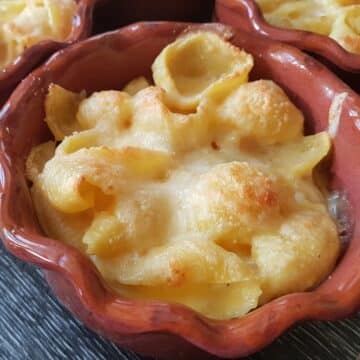

miwa says
We traveled to Italy in the summer and were impressed by the wide variety of pasta we encountered there. That got me into trying to find every kind of pasta I could after we got back to the US, which brought me to your site as I was looking for a way to creatively cook with calamarata. Your recipe turned out great! Even though I miscalculated the tomato puree and somehow doubled it (yeah it was swimming in sauce). We enjoyed the playfulness of the shapes in this dish too. Thank you. Well, since I have another 16 pounds of specialty pasta to go through, I'll be sure to browse the rest of your site.